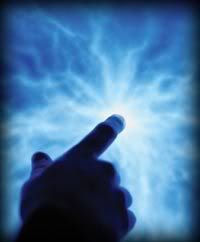Post by sidney33 on Feb 3, 2008 4:49:11 GMT
Johns Hopkins Health Alert
Light Therapy and Wellbutrin XL for SAD
Now patients with seasonal affective disorder have two effective therapies to relieve depression in the winter months – light therapy and the antidepressant, Wellbutrin XL.
At this time of year, changes in the amount of daily sunlight cause changes in the body’s internal biological clock, known as circadian rhythm. This rhythm is a 24-hour cycle that affects our eating and sleeping patterns, brain wave activity, hormone production, and other biological activities. In some people, less daily sunlight and changes in circadian rhythm can bring about depression. One theory is that the relative lack of sunlight during these times may alter brain levels of certain mood-related chemicals.
If you have SAD, what can you do?
• Light Therapy
Some people with seasonal affective disorder can be successfully treated with exposure to bright light. In one study, 57% of 191 people with SAD responded to light therapy. In another study, light therapy was comparable in effectiveness to antidepressant therapy but worked faster and caused fewer side effects.
Light therapy involves sitting in front of a bank of full-spectrum fluorescent lights for 30–60 minutes each day. Improvement can often be seen within a few days, with symptoms disappearing after two to three weeks. Continued light therapy is needed to prevent a relapse.
• Wellbutrin XL
In 2006 the FDA approved bupropion HCL extended-release tablets (Wellbutrin XL) for the prevention of major depressive episodes in people with a history of SAD. Wellbutrin XL is the first drug officially approved for SAD.
The efficacy of Wellbutrin XL for the prevention of SAD episodes was demonstrated in three double-blind, placebo-controlled trials -- the gold standard of medical research -- in adults with a history of recurrent major depressive disorder in autumn and winter. Treatment was started before the onset of symptoms in the autumn (September to November) and was discontinued following a two-week taper starting the first week of spring (fourth week of March).
In these trials, the percentage of patients who were depression free at the end of treatment was significantly higher for those on Wellbutrin XL than for those on placebo. Combining data from all three studies, the overall rate of people depression free at the end of treatment was 84% for those on Wellbutrin XL, compared with 72% for those on placebo.
These findings have not surprised psychiatrists and primary care physicians, who have long been using antidepressant drugs off label for treating SAD. But the approval of Wellbutrin XL by the FDA adds credibility to the treatment approach.
Posted in Depression and Anxiety on January 30, 2008
________________________________________
Medical Disclaimer: This information is not intended to substitute for the advice of a physician. Click here for additional information: Johns Hopkins Health Alerts Disclaimer
new from Johns Hopkins .Sidney.
Light Therapy and Wellbutrin XL for SAD
Now patients with seasonal affective disorder have two effective therapies to relieve depression in the winter months – light therapy and the antidepressant, Wellbutrin XL.
At this time of year, changes in the amount of daily sunlight cause changes in the body’s internal biological clock, known as circadian rhythm. This rhythm is a 24-hour cycle that affects our eating and sleeping patterns, brain wave activity, hormone production, and other biological activities. In some people, less daily sunlight and changes in circadian rhythm can bring about depression. One theory is that the relative lack of sunlight during these times may alter brain levels of certain mood-related chemicals.
If you have SAD, what can you do?
• Light Therapy
Some people with seasonal affective disorder can be successfully treated with exposure to bright light. In one study, 57% of 191 people with SAD responded to light therapy. In another study, light therapy was comparable in effectiveness to antidepressant therapy but worked faster and caused fewer side effects.
Light therapy involves sitting in front of a bank of full-spectrum fluorescent lights for 30–60 minutes each day. Improvement can often be seen within a few days, with symptoms disappearing after two to three weeks. Continued light therapy is needed to prevent a relapse.
• Wellbutrin XL
In 2006 the FDA approved bupropion HCL extended-release tablets (Wellbutrin XL) for the prevention of major depressive episodes in people with a history of SAD. Wellbutrin XL is the first drug officially approved for SAD.
The efficacy of Wellbutrin XL for the prevention of SAD episodes was demonstrated in three double-blind, placebo-controlled trials -- the gold standard of medical research -- in adults with a history of recurrent major depressive disorder in autumn and winter. Treatment was started before the onset of symptoms in the autumn (September to November) and was discontinued following a two-week taper starting the first week of spring (fourth week of March).
In these trials, the percentage of patients who were depression free at the end of treatment was significantly higher for those on Wellbutrin XL than for those on placebo. Combining data from all three studies, the overall rate of people depression free at the end of treatment was 84% for those on Wellbutrin XL, compared with 72% for those on placebo.
These findings have not surprised psychiatrists and primary care physicians, who have long been using antidepressant drugs off label for treating SAD. But the approval of Wellbutrin XL by the FDA adds credibility to the treatment approach.
Posted in Depression and Anxiety on January 30, 2008
________________________________________
Medical Disclaimer: This information is not intended to substitute for the advice of a physician. Click here for additional information: Johns Hopkins Health Alerts Disclaimer
new from Johns Hopkins .Sidney.

